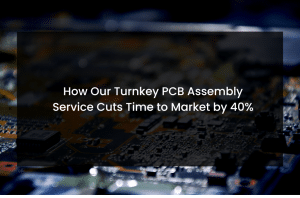In the rapidly evolving electronics industry, the relentless pursuit of smaller, faster, and more powerful devices has led to the miniaturization of electronic components and printed circuit boards (PCBs). While this innovation has revolutionized technology, it has exposed these intricate components to various potential threats, including moisture, dust, chemicals, and physical damage. This article will explore conformal coating, its application methods, the materials used, and its significance in safeguarding sensitive electronic components.
What is Conformal Coating?
Conformal coating for pcb is a protective technique that involves applying a thin, uniform material layer onto electronic components and PCBs. The primary objective of this coating is to create a barrier that shields these components from external environmental factors that can compromise their performance and reliability. These factors include moisture ingress, temperature fluctuations, chemical exposure, dust accumulation, and electrical interference.
Conformal Coating– Application Methods
Several methods are employed to apply coatings, each with its unique advantages, considerations, and suitable scenarios:
1. Brushing or Dipping: This traditional method involves manually brushing or immersing the components into the conformal coating solution. While cost-effective and accessible, this approach can result in uneven coating thickness, potentially leading to inadequate protection in certain areas.
2. Spraying: Conformal coating spray for pcb is a commonly used technique in which the coating material is atomized into fine droplets and then sprayed onto the components. This method provides greater control over coating thickness and uniformity, essential for consistent protection. However, it requires careful setup for conformal coating spray which ensures proper coverage.
3. Selective Coating: Selective coating involves applying the layer only to specific areas of the PCB, leaving other areas untouched. This method is facilitated by specialized machines that accurately target the intended regions. Selective coating minimizes the wastage of coating material and prevents interference with sensitive components.
4. Conformal Coating Parylene Deposition: Parylene, a unique material, is vapor-deposited to create a conformal, pinhole-free coating. This method is particularly effective for intricate geometries and delicate components, offering exceptional protection without compromising performance. Parylene coatings exhibit excellent moisture and chemical resistance, making them suitable for critical applications.
Materials Used for Conformal Coating:
The choice of conformal coating for pcb material is crucial, as different materials offer varying levels of protection and compatibility with specific applications:
1. Acrylic Resin: Acrylic coatings are known for their ease of application and cost-effectiveness. They offer general protection against moisture and contaminants, making them suitable for less demanding environments. However, they might not provide the highest level of chemical resistance.
2. Silicone Resin: Silicone coatings excel in flexibility, high-temperature resistance, and excellent electrical insulation properties. These coatings are ideal for components that experience extreme temperature fluctuations or require protection against vibrations.
3. Urethane Resin: Urethane coatings have enhanced chemical and abrasion resistance. They are well-suited for applications where components might encounter harsh chemicals or mechanical stress.
4. Parylene: Parylene coatings are vapor-deposited and offer a thin, pinhole-free layer that conforms precisely to intricate shapes. They provide exceptional moisture and chemical resistance, making them valuable for medical devices and other critical applications.
5. Epoxy Resin: Epoxy coatings are renowned for their durability, adhesive properties, and excellent protection against moisture, chemicals, and physical abrasions. However, the curing process for epoxy coatings can be time-consuming.
Significance of Conformal Coating:
The significance of conformal coating for pcb in electronics protection cannot be overstated. In today’s interconnected world, electronic devices are used in numerous industries, from healthcare and automotive to aerospace and consumer electronics. These devices often face harsh environments, whether implanted in the human body, exposed to outdoor elements, or subject to extreme temperatures. They act as a safeguard, extending the lifespan of components and ensuring consistent performance.
Conclusion:
As the demand for smaller and more powerful electronics continues to surge, protecting these components becomes paramount. It stands as a pivotal solution to counteract the potential harm caused by environmental factors. By comprehending the diverse methods of application and the array of materials available, manufacturers can make informed decisions about the best solution for their specific requirements. The coating substance is atomized into tiny droplets and sprayed onto the components using the typical method of conformal coating spray for pcb. Roots EMS provides suitable EMS services like PCB Assembly , conformal coating for pcb and more which is pivotal in enhancing electronic components’ longevity, durability, and reliability across a broad spectrum of applications.


